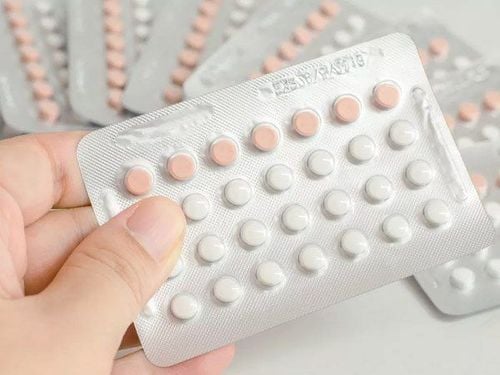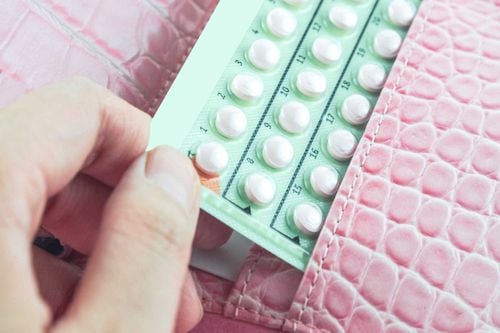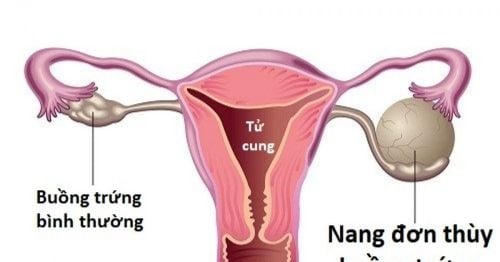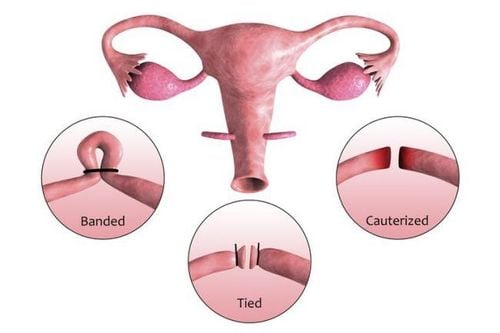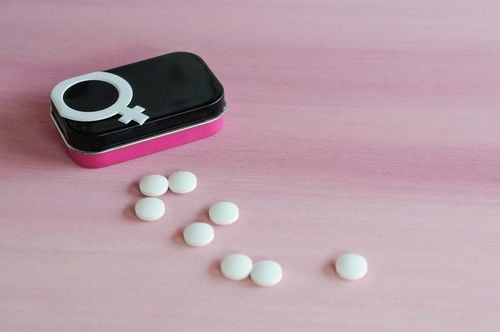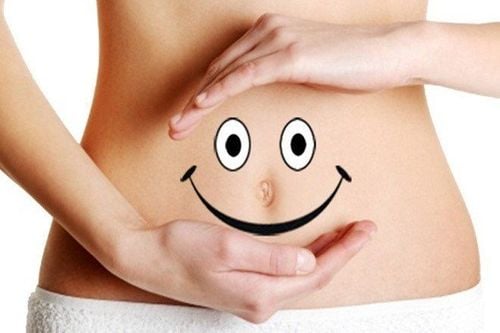This is an automatically translated article.
The article was professionally consulted with Doctor Pham Thi Mai Nhung - Obstetrician and Gynecologist - Department of Obstetrics and Gynecology - Vinmec International Hospital Da Nang.If you have sex without using birth control, you will be able to conceive at any time, including during and immediately after the end of your period. Therefore, if you are not planning to get pregnant, you should consider some form of contraception to avoid unwanted pregnancy.
1.How to calculate the menstrual cycle
The calculation of the menstrual cycle is that it begins on the first day of the menstrual period and continues until the first day of the next menstrual period.The most fertile period is the time of ovulation. This is the time when an egg is released from the ovary, also known as the ovulatory cycle. This period occurs 12 to 14 days before the next menstrual period is due.
There's no guarantee you won't get pregnant right after your period, although it's rare. It's important to remember that sperm can sometimes stay for a while in the body after unprotected sex. Therefore, it is still possible to get pregnant after a period ends if ovulation is early, especially for those who have naturally short menstrual cycles.
So there is still no safe way to help prevent pregnancy during unprotected sex.
Trắc nghiệm: Bạn có hiểu đúng về dấu hiệu mang thai sớm?
Các dấu hiệu mang thai sớm không phải chỉ mỗi trễ kinh mà còn có rất nhiều dấu hiệu khác như xuất huyết âm đạo, ngực căng tức,… Điểm xem bạn biết được bao nhiêu dấu hiệu mang thai sớm thông qua bài trắc nghiệm này nhé!
2. Time to get pregnant
Sperm can live inside the uterus for up to five days after sex, and pregnancy can only happen if there are sperm in the uterus or fallopian tubes while in the ovulation cycle.For most women, ovulation occurs around day 14 of the menstrual cycle. However, unprotected sex during this period or beyond the days of ovulation is not a guarantee for safe contraception.
Furthermore, for women with shorter cycles (average 28 to 30 days) there is still a chance of pregnancy if they have sex during this period. For example, if you have sex late in your cycle and ovulate early, you can still conceive. So using birth control such as condoms or other protection is always the safest way to prevent pregnancy.

3. Ovulation and conception process
Ovulation occurs when a mature egg is released from the ovary. About once a month, an egg matures and is released into the fallopian tube. It then travels towards the waiting sperm in the fallopian tubes and uterus.An egg can survive for 12 to 24 hours after it leaves the ovary. Sperm can live up to 5 days after sex. So when the egg and sperm meet during this time will be fertilized.
Pregnancy right after menstruation is still possible. At that time, the woman has sex at the end of the cycle and is approaching ovulation. In contrast, the probability of getting pregnant right before menstruation is very low. This is also not a safe day to avoid pregnancy.
You can calculate safe days by tracking ovulation and waiting 36 to 48 hours after ovulation, the chances of pregnancy during sex are very low. If fertilization is not performed, the lining of the uterus sheds and the menstrual cycle begins again.
4. The ovulation cycle tracker
Tracking ovulation is one way to determine the optimal time to conceive. It can also help prevent pregnancy and is a reliable birth control method. However, it can take several months of monthly cycle recording to figure out the pattern of ovulation.4.1. Ovulation Tracker Calculator For 8 to 12 months, record the day your period started and count the total number of days in that cycle. Note that, the first full day of the menstrual cycle is one day. Then, write down the longest and shortest number of days from the monthly tracking. Find out the first day of ovulation by subtracting 18 days from the length of the shortest cycle. For example, if the shortest cycle is 27 days, take 27 from 18 to get day 9. Find the last day of your ovulation by subtracting 11 from the length of your longest cycle. For example, if your cycle is 30 days, subtract 11 from 30 to get day 19. The period between the shortest and longest day is when you ovulate. According to the example above, it is somewhere between days 9 and 19. If you want to avoid pregnancy then avoid unprotected sex during these days. 4.2. How to Use the Ovulation Cycle Worksheet as a Contraception Ovulation occurs one day in the ovulatory cycle. The egg will function as it should for 12 to 24 hours. That doesn't mean conception can happen during the days of your ovulatory cycle. But to prevent pregnancy effectively, you should not have sex during this time.
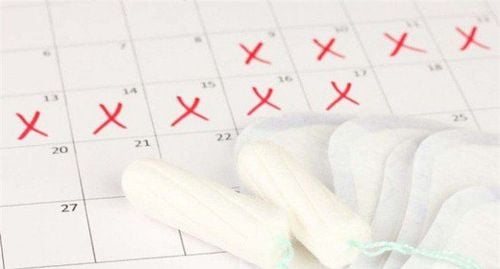
5. Some other methods
If you have a regular menstrual cycle, you can know your ovulation cycle, thereby helping to prevent pregnancy more effectively. However, this cycle can change every month by stress factors, diet, heavy exercise... caused.Tracking ovulation will be a more effective way to help get pregnant. However, if you want to avoid pregnancy, talk to your doctor so he can choose some of the most suitable birth control methods.
Other fertility awareness methods: monitor basal body temperature, check cervical mucus, use ovulation predictor.
Monitor body temperature Body temperature is the temperature when the body is completely at rest. And this temperature will rise slightly after ovulation. To monitor body temperature it is necessary to use a special thermometer.
Using a thermometer, record your temperature when you wake up in the morning before getting out of bed. You can then graph the daily temperature parameters and observe the results and you will see a slight increase in temperature of about 0.3 degrees Celsius during ovulation.
This method helps to find out when ovulation occurs. It also works better at preventing pregnancy by waiting to have unprotected sex until a few days after the temperature spike.
Cervical lining Some women notice an increase in cervical mucus close to the ovulation cycle. This is because estrogen levels increase during this time, causing the cervix to produce more mucus.
This mucus will be clearer and stretchy. Its consistency is similar to egg whites. The body is most fertile on the days of noticing an increase in cervical mucus.
Ovulation Predictor Kit This kit tests your urine for an increase in luteinizing hormone (LH). LH will rise 24 to 48 hours before ovulation. Avoid unprotected sex at this time if you're trying to prevent pregnancy.
In addition, there are several options for effective forms of contraception including: oral contraceptives; IUDs, birth control injections like Depo-Provera. These options are more than 99% effective if followed carefully. However, condoms are still an effective form of birth control, and they also help protect against sexually transmitted diseases.
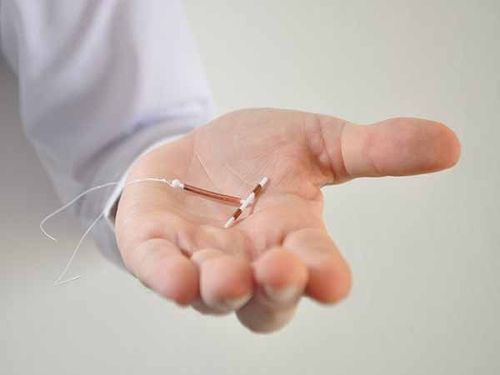
Please dial HOTLINE for more information or register for an appointment HERE. Download MyVinmec app to make appointments faster and to manage your bookings easily.
Reference sources: healthline.com, nhs.uk



